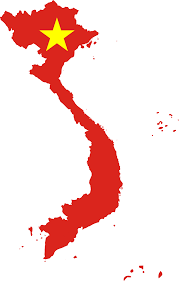Geographical position and Climate of Vietnam
Vietnam is located in Southeast Asia, bordered by China to the north, Laos to the northwest, Cambodia to the southwest, and the South China Sea to the east. The country is characterized by a long, narrow shape stretching over 1,650 kilometers from north to south, with a coastline of approximately 3,260 kilometers.
Vietnam’s climate is tropical and monsoonal; humidity averages 84% throughout the year. However, due to the country’s diverse topography, the climate varies considerably from one region to another.
- Northern Part: Features a humid subtropical climate with four distinct seasons: spring, summer, autumn, and winter. Winters (from November to April) are relatively cool and dry, while summers (from May to October) are hot and humid with a high rainfall.
- Central Part: Experiences a more tropical monsoon climate with a longer dry season and a shorter wet season. The central coast is prone to typhoons during the rainy season, which can affect the area from August to November.
- Southern Part: Has a tropical savanna climate with two seasons: the wet season from May to November, and the dry season from December to April. The southern region is typically warm year-round, with a more consistent temperature range and less seasonal variation than the northern part of the country.

